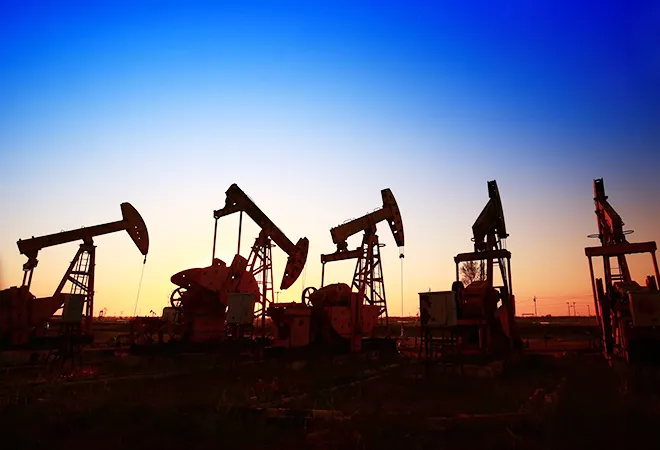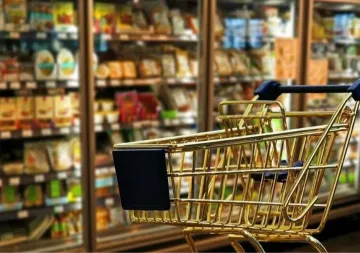
India is the closest of all the great powers to the Gulf: less than four days sail from Fujairah, the UAE’s Indian Ocean port, to the world’s largest refinery, Jamnagar in Gujarat. Yet New Delhi has often been concerned about the security of its oil and gas supplies. As the Middle East faces geopolitical realignment amidst pandemic, market slump and energy technology transformation, those concerns need to be redefined.
The Covid-19 outbreak has accelerated energy trends that were already underway. The collapse in oil prices has been partly reversed but only by unprecedentedly deep cuts in production from the OPEC+ alliance. Revenues from oil exports by the Organisation of Petroleum Exporting Countries (OPEC) were $1.13 trillion in 2012, but dropped to $418 billion in 2016 following the oil price crash, and look likely to come in below $350 billion this year.
Keeping the economy going during the pandemic, and reviving and retooling it afterwards, requires heavy spending.
Sectors targeted for diversification, such as tourism, aviation, trade and logistics, have also been badly hit by the coronavirus pandemic. Iran was one of the earliest viral hotspots and has since experienced a resurgence of cases. The Gulf Cooperation Council (GCC) countries are among the highest in the world in reported cases per capita, though this may reflect extensive testing, and identified deaths remain low.
Middle Eastern energy exporters, facing sharp economic contractions, have been caught in a dilemma. Keeping the economy going during the pandemic, and reviving and retooling it afterwards, requires heavy spending. But most were already running budget deficits before Covid-19 struck, and are in danger of running down their sovereign wealth funds and foreign exchange reserves. They are stuck between stimulus and fiscal consolidation and achieving neither.
It is likely that post-viral stimulus packages in Europe and, depending on the results of the November elections, the US, will focus heavily on ‘green’ spending to encourage electric vehicles and other non-oil technologies. The date of ‘peak oil demand,’ at which world consumption of oil begins to decline, was typically estimated in the 2030-40 range. But it may now come earlier, as the massive demand destruction of the pandemic shutdowns is followed by a slow economic recovery, new ways of working involving less commuting and business travel, and increased policy support for battery cars, bans on single-use plastics and other curbs on petroleum use.
It is likely that post-viral stimulus packages in Europe and, depending on the results of the November elections, the US, will focus heavily on ‘green’ spending to encourage electric vehicles and other non-oil technologies.
Political instability is nothing new in the Middle East. It had already intensified in late 2019, in the shape of massive protests in Lebanon, Iran and Iraq, and the enforced departure of long-time presidents in Sudan and Algeria. The internationalised civil wars in Libya and Yemen have grown more intractable. The Assad regime in Syria has largely regained control over a ruined country, but faces economic crisis, tightened sanctions and Turkish intervention.
Last year, Iran retaliated against stifling US sanctions on its oil exports with a spate of sabotage and deniable attacks, including mining of tankers and the September drone and missile attack on Saudi Arabia’s key Abqaiq oil processing facility. This year, tangible retaliation by Iran has been muted. But it has steadily reduced compliance with its side of the 2015 Joint Comprehensive Plan of Action (JCPOA), expanding its nuclear activities. A recent string of mysterious explosions at nuclear, military and civilian sites, including power and chemical plants, is widely assumed to be the doing of Israel, with US encouragement or assistance. Iran has been hoping to wait out the Trump administration, but at some point, the domestic political pressure to strike back may be irresistible.
The US policy drift away from the Middle East has continued, as the country turns to confrontation with China, wrestles with its own internal problems, and sees the region as less important given its own new-found oil- and gas-exporting status. Washington indicated that Riyadh was on its own following the Abqaiq attacks. Amid March’s brief oil price war between Saudi Arabia and Russia, it intervened politically to demand OPEC moved to cut output and shore up prices to protect American shale drillers, a move that would have been almost unthinkable a decade ago.
The US policy drift away from the Middle East has continued, as the country turns to confrontation with China, wrestles with its own internal problems, and sees the region as less important given its own new-found oil- and gas-exporting status.
China’s position in the region has grown in recent years, though not as much as it might have given its dependence on Middle Eastern petroleum imports. Its energy investments focus mostly on Iraq, and to some extent the UAE. The Middle Kingdom has a naval base at Djibouti at the mouth of the Red Sea, and has developed Pakistan’s port of Gwadar, though this remains more of a propaganda point for now. A massive economic-political deal between China and Iran, initiated in 2016 and supposedly leaked in more detail this month, remains mostly aspirational. Neither China nor Russia has done much to protect Tehran diplomatically or economically from US sanctions.
Russia’s financial role is weak, and as an energy exporter itself, it is a competitor of the Gulf countries. It has worked surprisingly well on coordinating oil output with them via the OPEC+ framework, and develops nuclear power plants in Iran and Egypt. But in political and military terms, it mostly plays a role as a spoiler in weak states such as Syria and Libya. Regional political upheaval is, on the whole, good for Moscow.
Bearing in mind its experiences of past oil crises, India might well be wary of threats to its supply. In the first quarter of 2020, 60% of its oil imports came from the Gulf, even though it has had to drop purchases from Iran to zero. Last year, 55% of its liquefied natural gas (LNG) imports were also from the Gulf. Yet current low prices and abundant supply might encourage a feeling of complacency.
After Covid-19, the Middle East will need much more investment, both in hydrocarbons and renewable energy.
Despite its proximity and importance to the Gulf as a customer and labour partner, India’s energy investments remain limited, primarily in the UAE and Oman. Its attempts to develop Iran’s strategic Chabahar port have run into trouble. Conversely, Saudi Arabia, Abu Dhabi National Oil Company and others want to build and buy refineries, petrochemical plants and storage facilities in India to serve its vast and growing market.
India can be much bolder in its engagement with the Middle East, and particularly the Gulf. After Covid-19, the region will need much more investment, both in hydrocarbons and renewable energy. With its rich solar resources, it could export electricity and/or hydrogen to India, which needs both clean electricity and reasonably priced gas to replace polluting coal.
Without taking sides in regional conflicts, and while remaining a friend to all, New Delhi can explore arrangements to improve mutual energy security. US containment and confrontation of some countries and coddling of others has not brought sustainable peace, while vague proposals for collective security have been and gone. India could be the mediator and guarantor for a more solid diplomatic settlement, with the promise of assuring its own future energy supplies.
The views expressed above belong to the author(s). ORF research and analyses now available on Telegram! Click here to access our curated content — blogs, longforms and interviews.




 PREV
PREV


